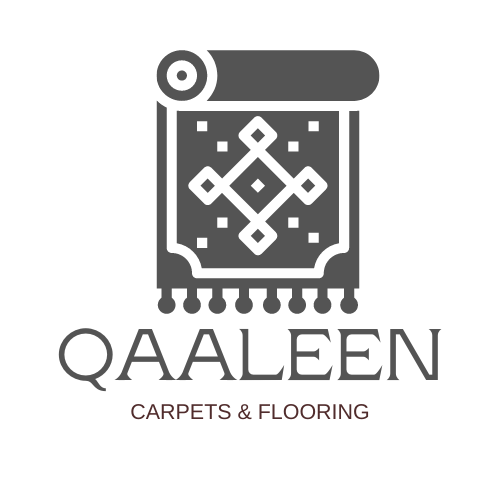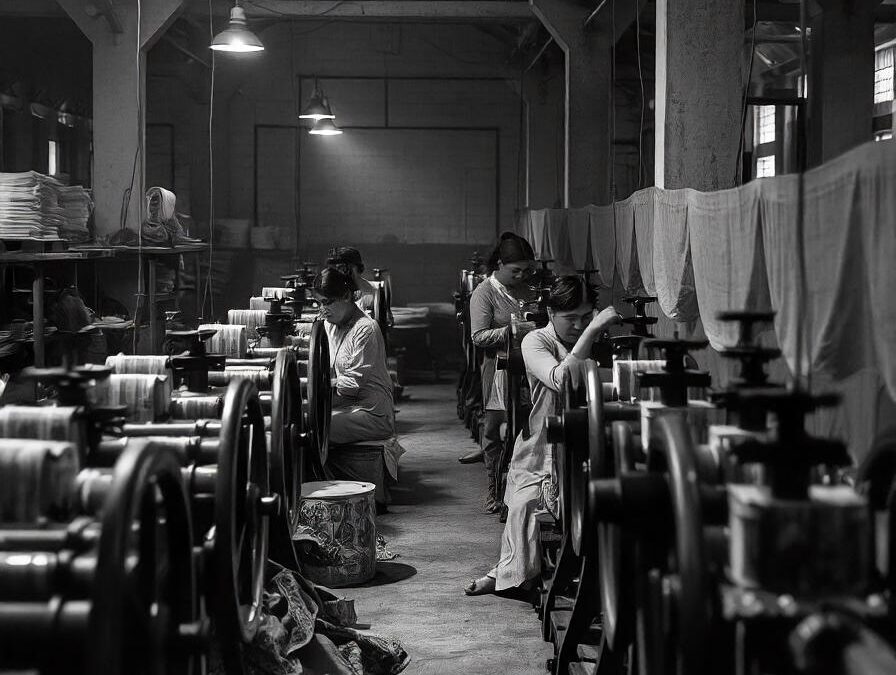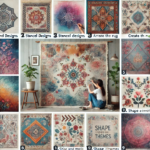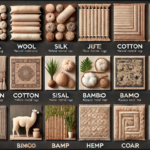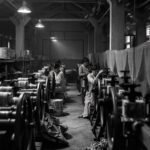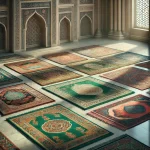Textile Machinery of Rugs (Qaaleen) Used in Textile Industries.
1. Introduction to Textile Machinery in Rug Production:
The textile industry, which encompasses the production of fabrics, carpets, and rugs, has seen transformative advancements in machinery, particularly in rug production. The process of creating rugs, or Qaaleen, has evolved significantly from traditional handcrafting techniques to highly sophisticated industrial systems. Today, modern textile machinery plays a pivotal role in rug manufacturing, enabling higher output, precision, and efficiency, all while maintaining the artistry that rug-making has long been revered for.
Textile machinery refers to the diverse range of machines used in the creation of fabrics and other textile products. These machines, from traditional handlooms to fully automated systems, are designed to weave, dye, print, and tuft rugs at an industrial scale. The evolution of textile machinery in rug production has been crucial for meeting the growing global demand, ensuring consistency in design, and reducing labor costs, all while enhancing the overall quality of the rug.
The mechanization of rug manufacturing began during the Industrial Revolution, when machines provided alternatives to traditional hand-woven techniques. These early machines reduced production time and made rugs more affordable and accessible to a broader audience while still maintaining the intricate patterns and high-quality materials that rugs are known for.
2. Understanding Rugs (Qaaleen): A Cultural and Industrial Staple:
Rugs have played an integral role in various cultures for centuries, serving as functional items for warmth, comfort, and artistic expression. They also represent cultural symbols and economic assets. In regions such as Persia (modern-day Iran), Turkey, India, and Central Asia, rugs—often referred to as Qaaleen—are woven with extraordinary attention to detail, featuring traditional patterns that reflect regional customs, heritage, and craftsmanship.
A Qaaleen, traditionally handwoven, is usually crafted from natural fibers such as wool, silk, and cotton, although synthetic fibers are now common in modern rug manufacturing. These materials contribute to the unique texture, durability, and aesthetic appeal of the rug. The production of rugs has been traditionally dominated by artisans skilled in weaving techniques passed down over generations.
However, as global demand for rugs surged, the mechanization of rug manufacturing became essential. The introduction of textile machinery enabled manufacturers to scale up production while preserving the beauty and quality that Qaaleen are famous for. Today, machine-made rugs replicate traditional patterns at faster rates, but there is still a market segment that values handcrafted rugs for their uniqueness and cultural significance.
3. Types of Textile Machinery Used in Rug (Qaaleen) Manufacturing:
Various textile machinery has been developed to meet the specific demands of rug production. These machines serve key functions in streamlining the process, improving efficiency, and maintaining consistency in the final product.
Handloom Machines.
Handloom weaving is one of the oldest methods of rug production, requiring skilled labor to manually interlace fibers into fabric. While traditional handloom weaving remains prevalent in some regions, industrial handloom machines have been designed to replicate this process at a larger scale. These machines allow workers to create intricate patterns and designs at a faster pace than traditional hand-weaving methods.
Jacquard Looms.
Jacquard looms are among the most advanced weaving technologies in the textile industry, enabling automatic control of individual threads. Invented by Joseph Marie Jacquard in the early 19th century, Jacquard looms use a series of punched cards to control the weaving process, which makes them ideal for producing complex patterns in rug manufacturing. Jacquard looms are essential in producing high-quality rugs with traditional patterns often found in luxury carpets.
Shuttle Looms.
Shuttle looms have been historically used in traditional rug weaving and are designed to insert a shuttle carrying the weft thread across the warp threads. Although these looms have been largely replaced by more modern systems, they are still employed in certain areas of rug production to create traditional patterns that reflect the skills of earlier weaving methods.
Rapier Looms.
Rapier looms are a more modern advancement in weaving technology, offering enhanced efficiency and speed compared to traditional shuttle looms. These machines use small rods called rapiers to carry the weft thread across the warp, providing precise control over thread tension and enabling the creation of high-quality rugs with intricate patterns and greater consistency.
Tufting Machines.
Tufting is a common method used in modern rug manufacturing, particularly for creating pile rugs. Tufting machines insert yarns into a backing material to form the rug’s pile. This method is much faster than traditional weaving techniques and is widely used in the production of machine-made rugs. The speed and efficiency of tufting machines make them a staple in modern rug production, especially for mass-market rugs.
4. Innovations in Rug Machinery: Automation and Technology:
The integration of automation and technology into textile machinery has revolutionized the rug-making industry. The use of modern technologies like automated looms, robotic systems, and advanced design software has significantly improved rug manufacturing processes, enhancing productivity and allowing for the creation of more complex patterns with greater precision.
Automation in Rug Production.
Automated systems have played a key role in enhancing the speed and accuracy of rug production. Automated looms, for instance, handle numerous threads simultaneously, reducing human error and improving output. Additionally, robotics have become essential in cutting, assembling, and packaging rugs, streamlining production and ensuring consistency in the final product.
Smart Looms and Robotics.
Smart looms that incorporate artificial intelligence (AI) are transforming rug production. These looms monitor the weaving process in real-time, adjusting settings autonomously to optimize thread tension and weaving speed. The incorporation of robotics further enhances efficiency, quality control, and inspection processes to ensure that each rug meets high standards.
CAD/CAM Software for Rug Design.
Computer-Aided Design (CAD) and Computer-Aided Manufacturing (CAM) software have become instrumental in rug manufacturing. Designers use CAD software to create detailed digital patterns, which are then translated into loom instructions using CAM systems. This integration allows for the efficient production of rugs with intricate patterns, ensuring that complex designs can be reproduced with consistency.
5. Processes in Rug (Qaaleen) Manufacturing: Machinery and Techniques:
The production of a rug involves several key steps, each of which benefits from specialized textile machinery to enhance speed, quality, and precision.
Weaving.
Weaving is at the core of rug production. Whether using a traditional handloom or a modern Jacquard loom, the principle of interlacing the warp and weft threads remains unchanged. Textile machinery improves the accuracy and speed of the weaving process, ensuring traditional patterns are faithfully reproduced.
Dyeing and Printing.
Dyeing and printing machines are essential for coloring the fibers used in rug production. These machines employ various techniques such as reactive dyeing, roller printing, and digital inkjet printing to apply rich, durable colors. Dyeing machines ensure that colors are evenly distributed across large batches, which is crucial for maintaining the consistent appearance of rugs.
Tufting and Hooking.
Modern tufting machines are used to create pile rugs, with needles inserting yarn into a backing material to form the rug’s pile. These machines are much faster than traditional hand-knotting methods, and they help manufacturers create rugs with a soft, plush texture. Hooking machines are employed to create tufted rugs with different surface textures, allowing for a range of styles and designs.
6. Technological Advancements in Textile Machinery for Rugs:
As technology evolves, so too does the ability of textile machinery to create high-quality rugs. The integration of advanced technologies, such as artificial intelligence (AI), machine learning (ML), and digital printing, is pushing the boundaries of what is possible in rug manufacturing.
CNC Machines.
Computer Numerical Control (CNC) machines offer precise control over the cutting and finishing processes in rug production. These machines reduce the need for manual intervention, ensuring that rugs are consistently produced with fewer defects and greater uniformity.
Sustainable Technologies.
The growing demand for sustainability in manufacturing has led to the adoption of environmentally friendly technologies in rug production. Companies are implementing waterless dyeing systems, solar-powered machines, and sustainable materials to reduce the environmental impact of rug manufacturing.
7. Challenges Faced by Textile Machinery in Rug Production:
Despite the advantages offered by textile machinery, there are challenges that need to be addressed in the rug production process.
Quality Control.
Ensuring consistent quality in large-scale rug manufacturing is challenging. While machines increase efficiency, human oversight is still necessary to detect defects and guarantee that the final product meets quality standards, especially when replicating traditional patterns.
Cost Efficiency.
The high initial investment in advanced textile machinery can be a barrier for smaller manufacturers, particularly in developing regions. Competing with larger companies that have access to more resources and capital can make it difficult for smaller businesses to thrive.
Complexity of Design.
While modern machines can handle complex patterns, translating intricate traditional patterns into machine-readable instructions remains a challenge. Skilled operators and sophisticated software are required to ensure that rugs are made to specification.
8. The Future of Textile Machinery in Rug Production:
The future of textile machinery in rug manufacturing looks promising, with continuous innovation expected to transform the industry further.
Integration of AI and Machine Learning.
AI and machine learning will likely play an even larger role in rug production. These technologies will allow machines to self-optimize based on real-time data, improving efficiency, precision, and design complexity.
Smart Fabrics and Interactive Rugs.
Incorporating electronics into rugs, such as smart fabrics, could become a significant trend in the future. These advanced technologies might include heating elements, lighting, or interactive features that respond to touch, adding an entirely new dimension to rug production.
Conclusion:
The development of textile machinery has significantly improved rug production, enhancing efficiency, design precision, and overall quality. The ability to replicate **traditional
